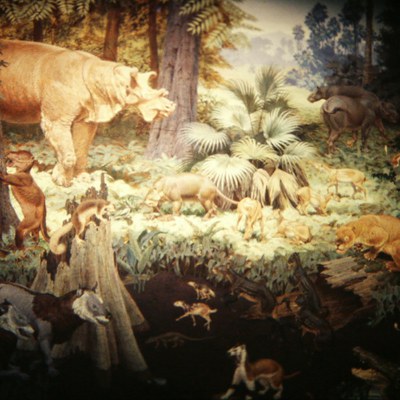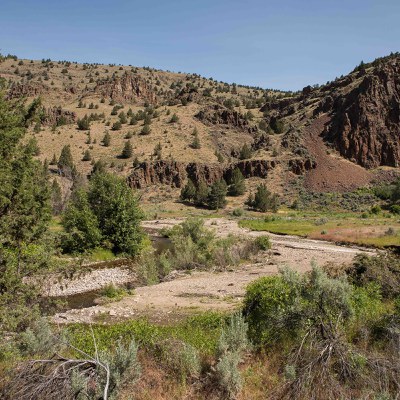Travel back in time…
It’s four million years ago and the earth as we know it is warmer than today. Due to this increased heat, grasslands flourish and are filled with all sorts of wildlife, most of which are unfamiliar to us now. Animals such as saber-toothed cats and Toxodons—large-hoofed mammals resembling boars—roam about these vast grasslands, hunting and grazing. A river runs through the tall grasses and is teeming with unfamiliar species as well. Large fish and amphibians wade through the cool water, occasionally coming to the surface to investigate.

Now zoom back to the present day…
A group of scientists are in this same grassland from millions of years ago, but it looks quite different. Instead of huge flora and fauna, there are cattle grazing on a mix of native and non-native grasses interspersed with shrubs and the occasional fence line. The river from the past remains, but winds in different directions and carries different life. However, it still holds memories of its past—fossils that tell the stories of species long forgotten.

One such species’ fossil was unearthed right here in Central Oregon near the town of Madras, in the Trout Creek area. Yes, the same Trout Creek that runs through Priday Ranch!
The sabertooth salmon, Oncorhynchus rastrosus, an ancient species, were remarkable looking creatures. Sabertooth salmon could measure up to nine feet in length (yes, you read that right!) and possessed two large horizontal teeth at the tip of their nose. Despite all of this, they still managed to somewhat resemble contemporary salmon. Contrary to their common name’s implication, these teeth were closer in style to a warthog’s rather than the downward facing teeth of saber-toothed cats. It’s theorized that these teeth were beneficial to male salmon during spawning season, likely used for competition with other males.
These kinds of discoveries highlight another important reason for land conservation. Preserving lands helps us not only protect habitats for plants and animals, but it also helps us preserve the history of a place. From historic buildings left by settlers or fossils from millions of years ago, the land has a story to tell us, if only we are keen enough to listen.
Sources:
- Deschutes River Conservancy
- University of Oregon Museum of Natural and Cultural History
- Encyclopaedia Britannica
Learn more:


